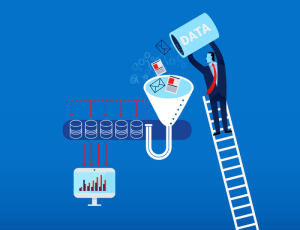From the September 2017 issue of HealthCare Business News magazine
By: Ron Iller
The health care industry has undergone immense change over the past decade, specifically with the implementation of value-based care (VBC), which created a shift in reimbursement, performance and overall organizational goals.
With the road to value continuing, changes within health care organizations need to occur to ensure success. A major key in this process is through the alignment around data and the implementation of analytics. The analytics market is booming and is expected to reach $34.27 billion by 2020. As such, adoption around analytics is high and will continue to rise. The challenge now lies in properly using it to meet industry-wide goals.



Ad Statistics
Times Displayed: 68926
Times Visited: 2261 Ampronix, a Top Master Distributor for Sony Medical, provides Sales, Service & Exchanges for Sony Surgical Displays, Printers, & More. Rely on Us for Expert Support Tailored to Your Needs. Email info@ampronix.com or Call 949-273-8000 for Premier Pricing.
To make the most of these investments and ensure VBC success, health care organizations need to align around data insights through data acquisition, aggregation, access and communication.
Data is king. In fact, 81 percent of organizations across various industries support the notion that it should be at the heart of everything they do. Regarding health care, many organizations face the enormous hurdle of acquiring the data needed for VBC.
Many organizations have difficulty acquiring it because extricating data is hard, whether it comes from one of the many disconnected groups or their own network. To ensure data is at the crux of organizational decisions, it’s important to acquire data once and use it multiple times for multiple purposes. In addition to the difficulty of acquiring data, organizations are now entering into agreements with other businesses — sometimes dozens or even hundreds of separate entities — where they’ll need to share data to help drive a patient’s treatment or gain insight into a population of patients.
For this to happen efficiently, organizations need to leverage technology that enables users to access various insights such as billing, lab testing, service line usage, supply chain or payroll.
To successfully aggregate and create information sharing, health care organizations need to do the following:
• Acquire – The ingestion of data from ever growing and disparate data sources covers domains like clinical, operational, financial, outcomes and sentiment. While much of this data is structured, much of it is still not. Organizations need to align on acquiring this data, standardizing it and sharing it across the organization.
• Aggregate – Before analytics can work its magic, it must normalize data into a central repository to create a single source of truth by leveraging a common identity for population members as well as policy to ensure only the appropriate records are included. This piece can be the most vexing for organizations with large out-of-network data needs.
• Analyze – This process is where the “magic” happens. Analytics enhances the normalized data to drive insights that will help organizations track back to value.
• Access – Data is only valuable if it is accessible across the entire health care organization. Access is catered toward organizational needs and should enhance the workflow of those using it.

